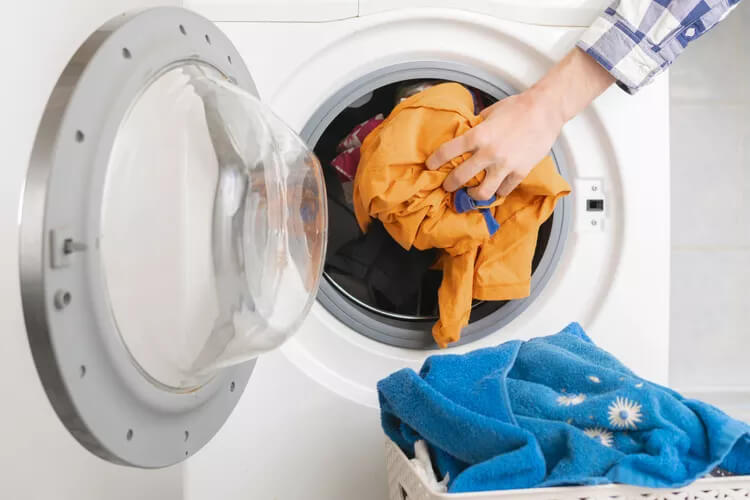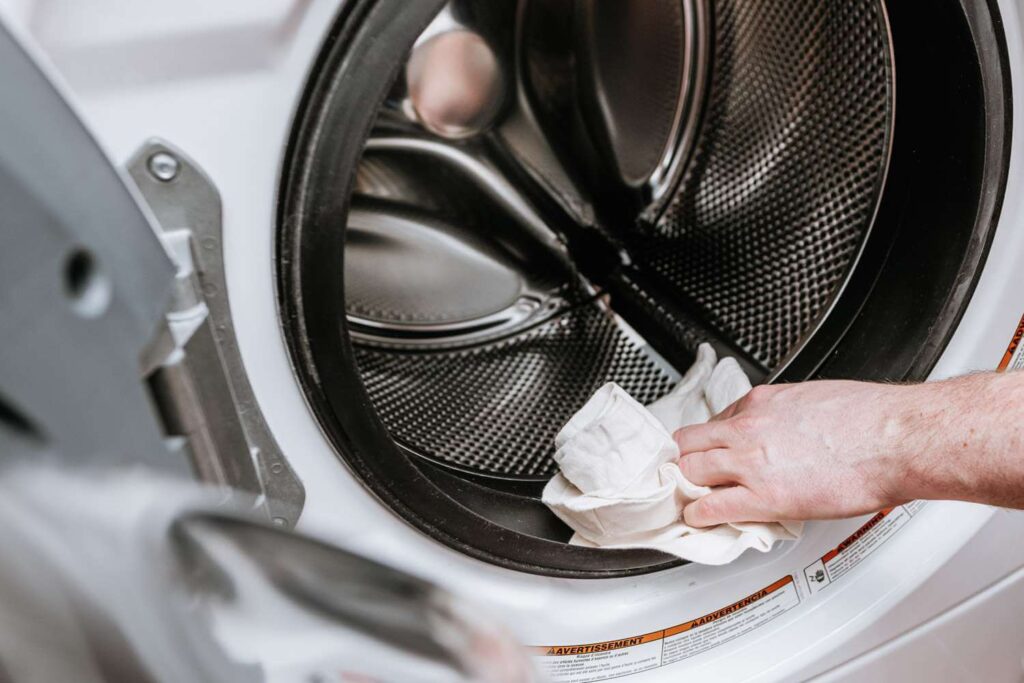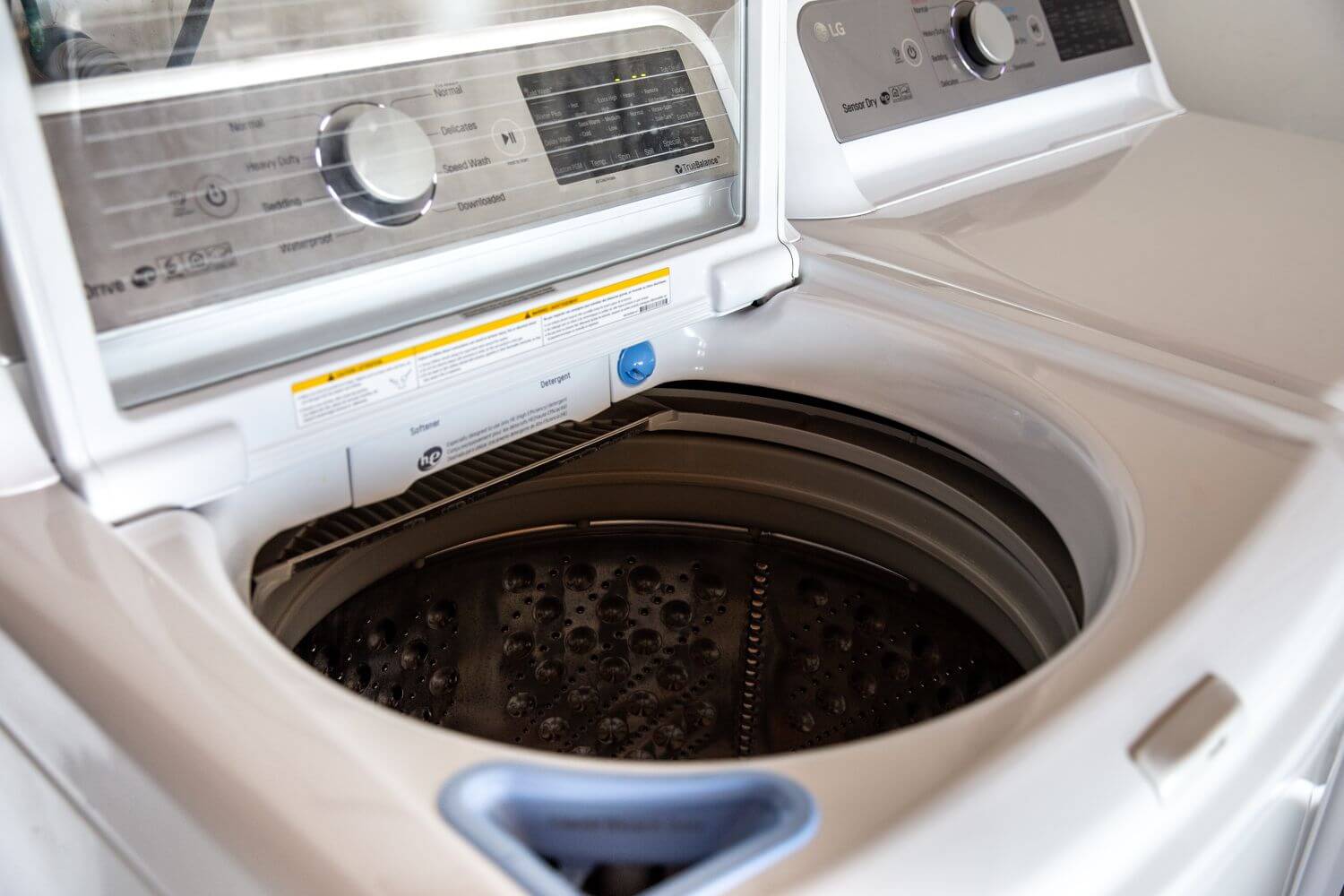So, you’ve got yourself a front-loading washing machine, eh? That sleek, door-on-the-front wonder that’s supposed to make laundry a breeze. Well, buckle up because we’re about to dive into the realm of maintaining and repairing these laundry wizards.
In the grand dance of laundry, front-loading machines have taken center stage. They twirl your clothes in a gravity-defying spectacle, promising cleaner, fresher attire. But, my friend, to keep this laundry waltz smooth, you’ve got to put on your maintenance shoes.
You might be wondering, “Why should I bother with maintenance?” Picture this: you live in the heart of Brooklyn, New York, and your washing machine decides to throw a tantrum. Laundry day turns into a chaotic Broadway production, and suddenly, your socks are the stars of the show, scattered on the floor like misplaced props. Regular maintenance is the backstage pass that keeps your laundry spectacle drama-free.
Routine Maintenance

Cleaning the Door Seal and Gasket
Ah, the elusive door seal and gasket, the unsung heroes that prevent watery escapades. Imagine a seal-tight tango between your door and the machine – that’s what keeps water in its place.
- Why Clean?
- Prevents mold and mildew growth
- Extends the lifespan of the seal
- How to Clean:
- Mix equal parts water and vinegar
- Wipe the seal with a sponge soaked in the solution
- Dry thoroughly with a cloth
Checking and Cleaning the Detergent Dispenser
Your detergent dispenser – the cup that holds the key to cleanliness. Over time, it can become a gooey mess, sabotaging your laundry day.
- Avoiding Buildup:
- Use the right amount of detergent
- Opt for high-efficiency (HE) detergents
- Cleaning Techniques:
- Remove the dispenser drawer
- Rinse it under warm water
- Scrub away any residue with an old toothbrush
Inspecting and Cleaning the Filter
Hidden beneath the drum lies the filter – the guardian against lint and debris invasion.
- Locating the Filter:
- Check your machine’s manual for specifics
- Usually positioned at the front bottom panel
- Clearing Debris and Lint:
- Place a bowl under the filter
- Twist the filter cap, releasing residual water
- Remove debris, rinse, and reassemble
Embrace these rituals, and your front-loading companion will spin its tales of cleanliness without a hitch. Stay tuned for more laundry wisdom coming your way!
Preventative Measures
Using the Right Detergent
Front-loading machines have a refined taste when it comes to detergent. It’s not about quantity; it’s about quality.
- Types of Detergents:
- Opt for high-efficiency (HE) detergents
- Check the manufacturer’s recommendations
- Avoiding Excess:
- Less is more – use the recommended amount
- Excessive detergent leads to residue buildup
Balancing the Load
Ever felt your machine waltzing a bit too much during the spin cycle? That’s a load balance issue, my friend.
- Importance of Balanced Loads:
- Ensures even distribution during spin
- Prevents the machine from bouncing around
- Tips for Proper Loading:
- Mix large and small items
- Distribute heavy and light items evenly
- Don’t cram everything in – give your clothes some breathing space
Regularly Checking and Adjusting Leveling Feet
Your washing machine needs a solid stance – think of it as the karate kid in the laundry dojo.
- Ensuring Stability:
- Level your machine for proper operation
- Unstable machines can vibrate excessively
- Proper Adjustment Techniques:
- Use a bubble level to check
- Adjust the leveling feet as needed
- Ensure all four feet are firmly in contact with the floor
By choosing the right detergent, mastering the art of load balancing, and ensuring a stable stance, you’ll turn your laundry routine into a harmonious melody. Now, let’s keep the spin cycle rocking smoothly!
Troubleshooting Common Issues
Leaking Water
A wet surprise on your laundry room floor? Time to play detective and stop that waterworks show.
- Identifying the Source:
- Check the door seal for tears or damage
- Inspect the detergent dispenser and filter for leaks
- Ensure the hose connections are tight
- DIY Solutions:
- Tighten loose connections
- Replace a damaged door seal or gasket
- Clean the detergent dispenser and filter regularly
Foul Odor

Is your laundry no longer smelling like a field of wildflowers but more like a swamp? Let’s tackle that nasty odor head-on.
- Causes of Bad Smells:
- Mold and mildew in the door seal and gasket
- Residue buildup in the detergent dispenser and filter
- Tips for Eliminating Odors:
- Clean the door seal and gasket regularly
- Run a hot water cycle with vinegar or baking soda
- Leave the door ajar after each use for ventilation
Noisy Operation
Is your washing machine performing an unexpected percussion concerto? Let’s silence the drums and get back to a peaceful laundry symphony.
- Diagnosing the Noise:
- Check for foreign objects in the drum
- Inspect the leveling feet for stability
- Ensure the load is balanced
- Possible Solutions:
- Remove foreign objects from the drum
- Adjust the leveling feet for stability
- Redistribute the load for a balanced spin
By addressing these common issues, you’ll keep your front-loading machine humming along smoothly. Now, let’s troubleshoot those quirks and restore peace to your laundry routine!
Repairs and Replacements
Door Seal and Gasket Replacement
The door seal and gasket – the unsung heroes – might occasionally bow out. Recognizing the signs and knowing the replacement dance is crucial.
- Signs of Wear and Tear:
- Visible tears, cracks, or damage
- Water leakage despite routine maintenance
- Replacement Procedure:
- Order a compatible replacement part
- Unplug the machine for safety
- Remove the old gasket and install the new one meticulously
Pump and Filter Replacement
The pump and filter, guardians against lint and debris, can succumb to the battlefield over time. Recognizing their battle fatigue is key.
- Indications of Faults:
- Persistent drainage issues
- Unusual noises during the draining cycle
- Guidelines for Replacement:
- Consult the manual for location
- Disconnect power and water supply
- Replace the pump or filter with a suitable replacement
Motor and Belt Maintenance
The motor and belt – the power duo that keeps the drum swaying – may sometimes play out of tune. Recognize the discord, and let’s bring back the melody.
- Symptoms of Issues:
- Unusual noises during operation
- Drum not spinning or turning irregularly
- Repair or Replacement Options:
- Tighten loose belts if applicable
- If the motor is faulty, consider professional repair or replacement
- Regularly lubricate moving parts for optimal performance
Knowing when to replace or repair these components ensures your front-loading machine keeps spinning tales of cleanliness without any hitches. Stay vigilant, and let’s keep the laundry dance floor smooth and lively!
Professional Assistance

Knowing When to Call a Technician
Alright, we get it – not every laundry hiccup can be fixed with a DIY remedy. Some issues demand the expertise of a seasoned technician. So, when should you throw in the towel and make that call?
- Complex Issues Requiring Professional Help:
- Electrical malfunctions or wiring problems
- Internal components like the control board malfunctioning
- Persistent issues despite multiple DIY attempts
- Choosing a Reputable Appliance Repair Service:
- Seek recommendations from friends or online reviews
- Verify their certification and experience
- Inquire about warranties on repairs
When the laundry day chaos becomes a saga, and your machine resembles a puzzle missing a few crucial pieces, it’s time to dial in the professionals. They’re equipped with the knowledge and tools to decode the most intricate laundry mysteries.
Now, let’s wrap up our journey into the intricate world of maintaining and repairing front-loading washing machines. Armed with routine maintenance habits, troubleshooting skills, and the wisdom to know when to call for backup, you’re all set to keep the laundry waltz going smoothly. Happy laundering!
A Symphony of Suds and Spin
In this grand finale, we’ve taken a spin through the intricate steps of maintaining and repairing front-loading washing machines. From the graceful waltz of routine maintenance to the troubadour troubleshoots and the heroic replacements, you’re now armed with the knowledge to keep your laundry dance floor free of chaos.
Recap of Key Maintenance Steps:
- Door Seal and Gasket: A clean embrace to prevent water escapades.
- Detergent Dispenser: The cup of cleanliness deserves a regular rinse.
- Filter Inspection: Guardian against lint invasions, hidden beneath the drum.
Much like a doctor’s visit, your washing machine needs regular check-ups. A stitch in time saves nine, they say – a repaired gasket now saves a flood later. Make routine checks and maintenance your washing machine’s version of self-care.
Your front-loading companion, with the right care, can be a laundry virtuoso for years. From the detergent duet to load-balancing choreography, each step ensures a harmonious performance, load after load.
So, whether you’re fixing leaks, banishing odors, or ensuring a noiseless spin, you’re now the conductor orchestrating a laundry symphony. Remember, a well-maintained front-loading washing machine isn’t just an appliance; it’s a household virtuoso, and you hold the baton.
Armed with this guide, go forth, troubleshoot like a maestro, and keep those clothes dancing in the rhythm of cleanliness. Until next laundry day, stay tuned, stay clean, and keep the spin cycle rolling!
Frequently Asked Questions (FAQ)
Q1: Why is routine maintenance crucial for front-loading washing machines?
A: Routine maintenance is vital to prevent issues like mold growth, foul odors, and leaks. Regular checks and cleaning of components like the door seal, detergent dispenser, and filter ensure optimal performance and a longer lifespan for your machine.
Q2: How often should I clean the door seal and gasket?
A: It’s recommended to clean the door seal and gasket at least once a month. However, if you notice any visible mold, mildew, or residue buildup, more frequent cleaning may be necessary.
Q3: What type of detergent should I use for a front-loading washing machine?
A: Opt for high-efficiency (HE) detergents designed for front-loading machines. These detergents produce fewer suds and are formulated to work efficiently with the lower water levels typical in front loaders.
Q4: How can I troubleshoot a leaking front-loading washing machine?
A: Check the door seal for damage, inspect the detergent dispenser and filter for leaks, and ensure tight hose connections. Tightening loose connections and replacing damaged components, such as the door seal, can often solve leakage issues.
Q5: What should I do if my front-loading machine produces a foul odor?
A: Regular cleaning of the door seal, gasket, detergent dispenser, and running a hot water cycle with vinegar or baking soda can help eliminate foul odors. Additionally, leave the door ajar after each use to promote ventilation.
Q6: When is it time to call a professional technician?
A: If you encounter complex issues like electrical malfunctions, persistent problems after multiple DIY attempts, or internal component failures, it’s advisable to seek the expertise of a professional technician.
Q7: Can I replace the door seal and gasket myself?
A: Yes, replacing the door seal and gasket is a manageable DIY task. Ensure you have a compatible replacement part, unplug the machine for safety, and follow the manufacturer’s guidelines for a step-by-step replacement.
Q8: How often should I run a maintenance cycle on my front-loading washing machine?
A: Running a maintenance cycle every 2-3 months is generally recommended. This involves cleaning the drum, door seal, and running a hot water cycle with vinegar or a specialized washing machine cleaner to remove any residue.
Q9: What can I do to reduce noise during the washing machine’s operation?
A: Check for foreign objects in the drum, ensure the load is balanced, and inspect the leveling feet for stability. Removing foreign objects, redistributing the load, and adjusting leveling feet can often reduce or eliminate unwanted noise.
Q10: Is it necessary to use leveling feet for my front-loading washing machine?
A: Yes, leveling your washing machine is crucial for proper operation. Use a bubble level to check and adjust the leveling feet to ensure all four feet are firmly in contact with the floor, preventing excessive vibrations and movement during operation.



